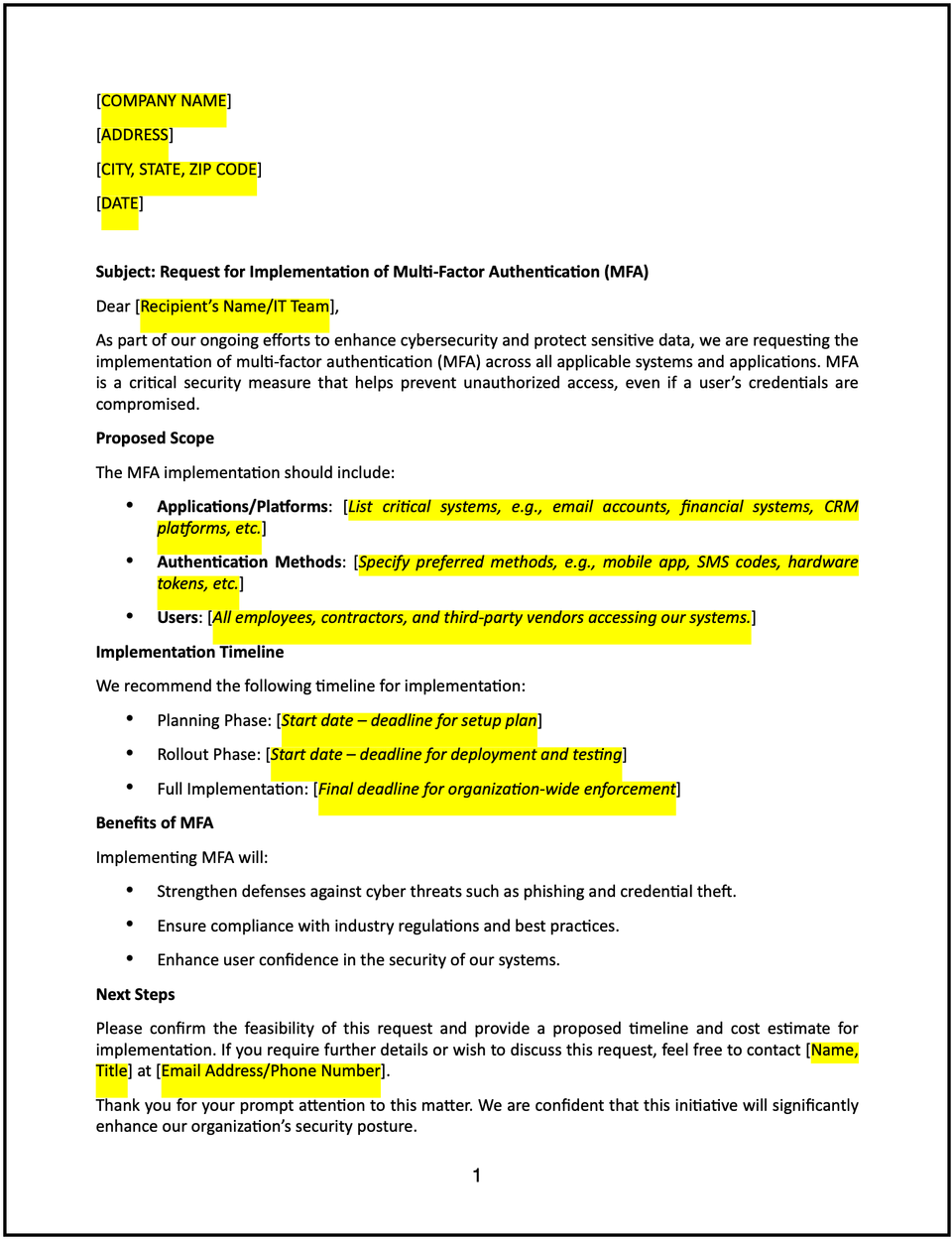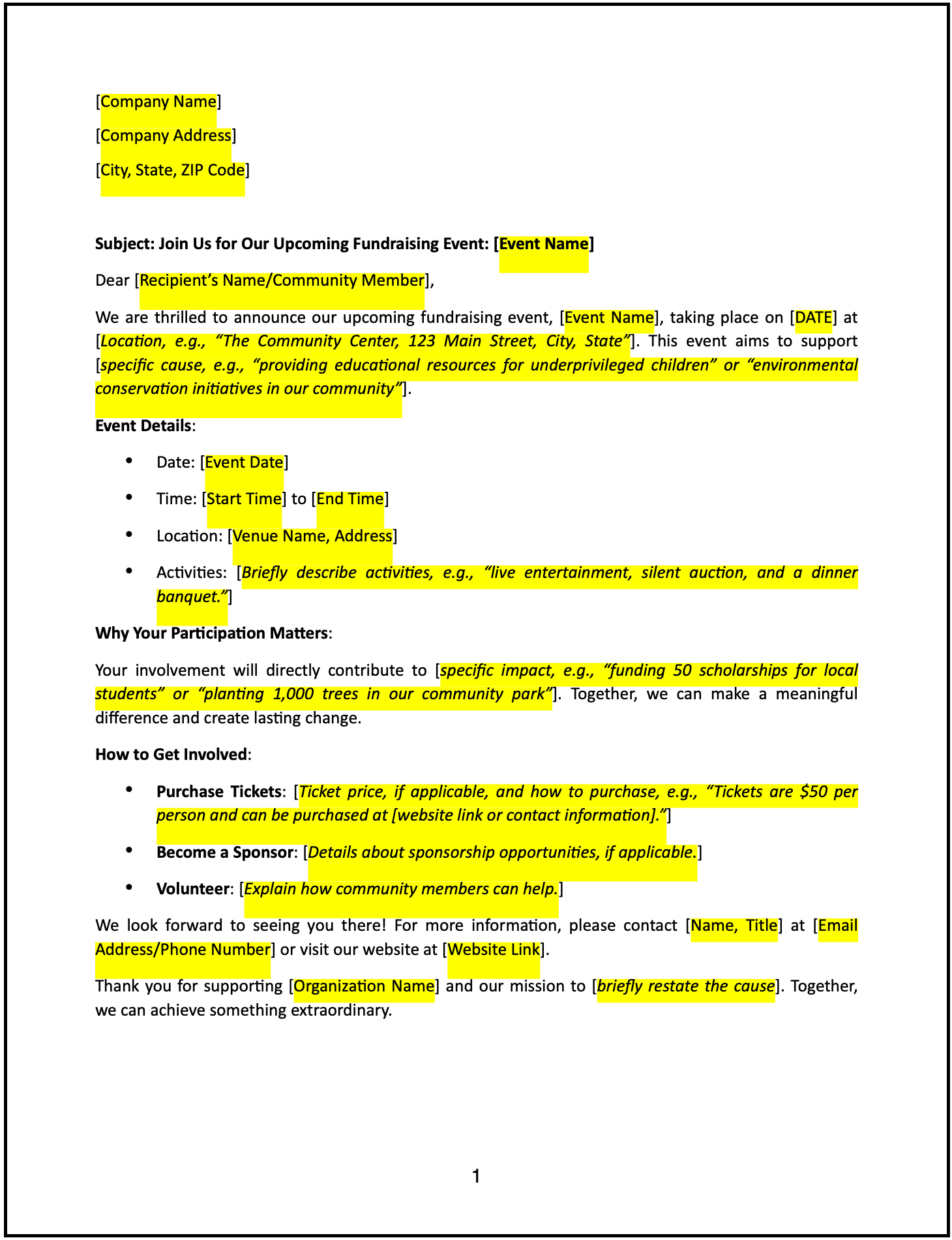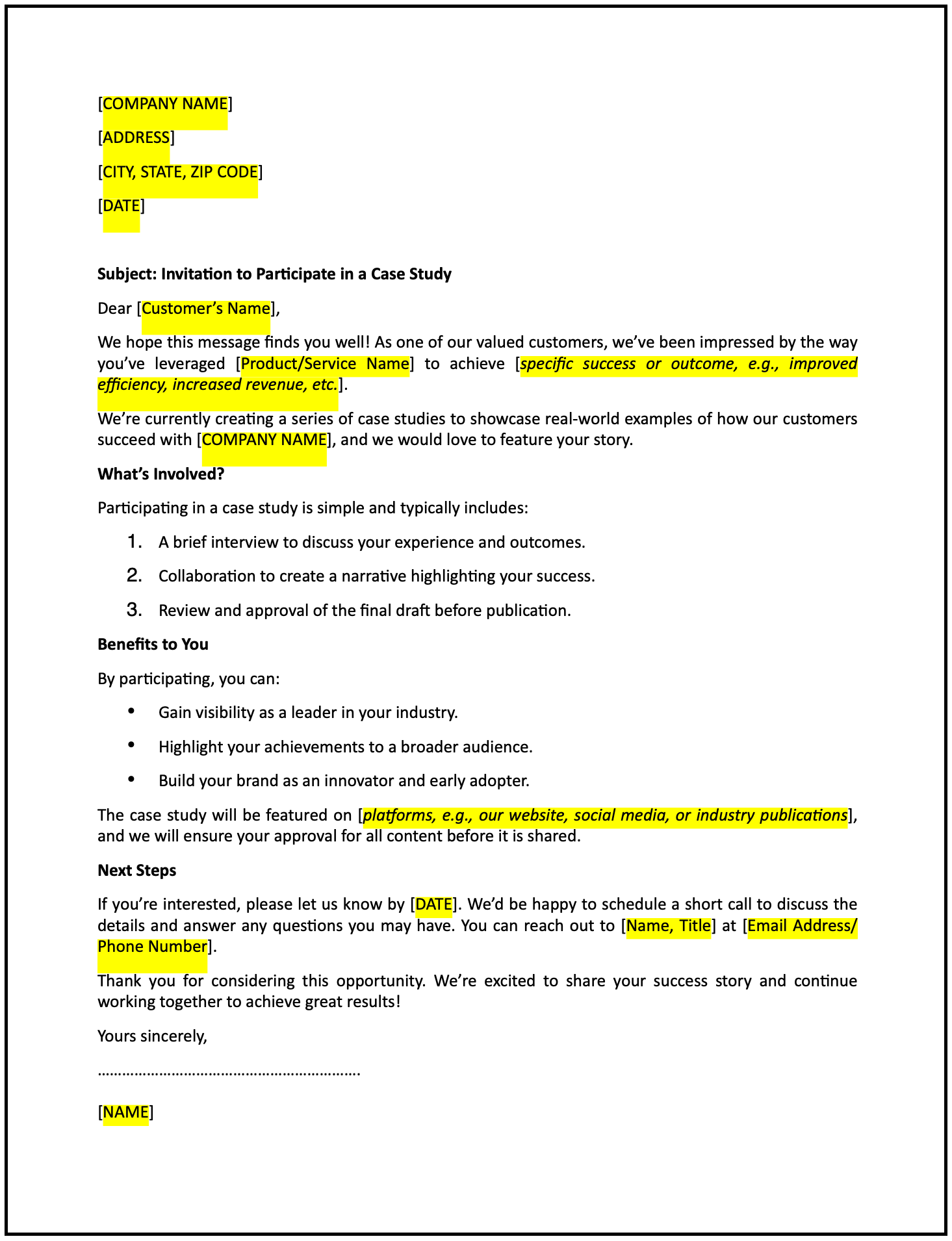Letter of request for multi-factor authentication (MFA) implementation: Free template

Letter of request for multi-factor authentication (MFA) implementation
A letter of request for multi-factor authentication (MFA) implementation is a formal communication used to propose the adoption of MFA as a security measure to protect sensitive data and systems. This letter highlights the benefits of MFA, outlines the request’s rationale, and encourages collaboration to enhance organizational security.
How to use this letter of request for multi-factor authentication (MFA) implementation
- Open with an introduction: Address the recipient respectfully and state the purpose of the letter—to request the implementation of MFA for organizational security.
- Provide context: Briefly explain the current security landscape and the increasing risks of unauthorized access to systems and data.
- Specify the request: Clearly outline the proposal to implement MFA, including systems, applications, or user groups that will be affected.
- Highlight the benefits: Emphasize how MFA strengthens security, reduces unauthorized access risks, and aligns with industry best practices.
- Reference compliance needs: If applicable, mention regulatory requirements or standards that necessitate MFA implementation.
- Suggest a timeline: Propose a schedule for the rollout, including time for testing and training.
- Offer support: Reassure the recipient of your willingness to collaborate on planning, testing, and training for the rollout.
- Maintain a professional tone: Ensure the letter is clear, respectful, and solution-focused.
- Provide contact information: Include details for the recipient to reach out with questions or to discuss the proposal further.
Benefits of using a letter of request for multi-factor authentication (MFA) implementation
This letter ensures a structured and professional way to propose MFA implementation while fostering collaboration and improving security. Here’s how it helps:
- Enhances security: MFA significantly reduces the risk of unauthorized access by adding an extra layer of protection.
- Promotes accountability: Clearly outlining the request demonstrates attentiveness to organizational security needs.
- Reflects professionalism: A well-crafted letter shows respect and commitment to safeguarding sensitive information.
- Supports compliance: Adopting MFA aligns with regulatory requirements and industry standards.
- Encourages collaboration: Proposing a detailed plan fosters a cooperative approach to implementation.
Tips for writing an effective letter of request for multi-factor authentication (MFA) implementation
- Be specific: Clearly describe the systems or applications that will require MFA and the timeline for implementation.
- Use professional language: Maintain a respectful and proactive tone to encourage collaboration and buy-in.
- Provide context: Briefly explain the security challenges and why MFA is a necessary solution.
- Highlight benefits: Emphasize how MFA protects sensitive data and aligns with best practices.
- Include a timeline: Propose a realistic schedule to ensure proper planning and testing.
- Keep it concise: Focus on the key points while ensuring the tone is professional and engaging.
Frequently asked questions (FAQs)
Q: What details should I include in this letter?
A: Include the reason for the request, systems or applications affected, proposed timeline, and the benefits of implementing MFA.
Q: Should I personalize the letter?
A: Yes, addressing the recipient directly ensures clarity and demonstrates attentiveness.
Q: Who typically sends this letter?
A: IT managers, cybersecurity officers, or compliance teams typically send this letter.
Q: How formal should this letter be?
A: The tone should be professional yet approachable, focusing on collaboration and trust-building.
Q: When should this letter be sent?
A: Send the letter when reviewing security protocols, planning new initiatives, or addressing vulnerabilities.
Q: Can this letter include cost estimates?
A: Yes, providing an estimate of costs and potential ROI can strengthen the proposal.
Q: Is acknowledgment from the recipient required?
A: While not mandatory, requesting acknowledgment ensures the recipient is aware of and considering the request.
This article contains general legal information and does not contain legal advice. Cobrief is not a law firm or a substitute for an attorney or law firm. The law is complex and changes often. For legal advice, please ask a lawyer.


